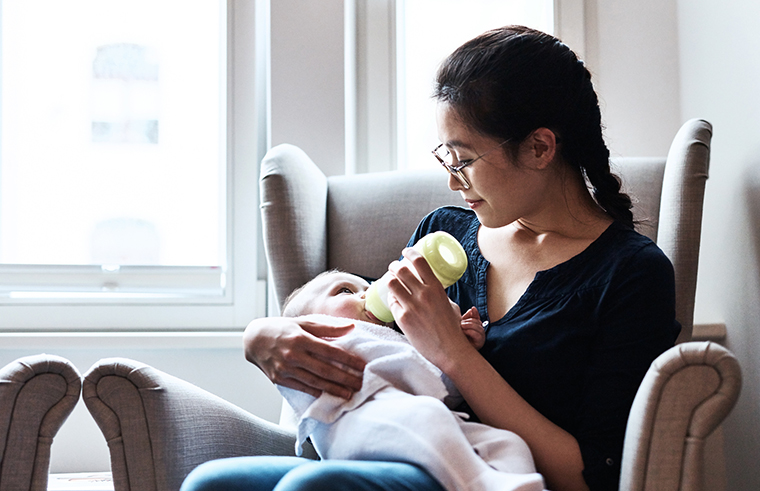Supplementary feeding your breastfed baby: 5 steps to success

Whether you’re returning to out-of-home work, experiencing an illness, or your baby isn’t always able to feed directly from the breast, there may be times when you want or need to introduce bottle-feeding to your breastfed baby.
What exactly is supplementary feeding?
Supplementary feeding, or complementary feeding, just means giving your baby formula or additional breast milk on top of breastfeeding. This may be recommended because of breastmilk supply issues, or attachment issues. Supplementary feeding is usually done by offering baby a bottle but other methods can include using a cup or breastfeeding supplementing tube.
Will supplementing throw my hard work out the window?
Understandably, many mums can have a range of feelings and fears around introducing bottles to their breastfed baby. Perhaps you’ve spent a lot of time and energy getting breastfeeding off to a good start, or maybe you’re still in the process of figuring out how to make breastfeeding work successfully for you. Either way, you don’t want anything get in the way of good breastfeeding.
Babies use a completely different sucking action when they’re feeding from a bottle compared to feeding from the breast. If you’re having concerns, it helps to know how the mechanics work so you can encourage your baby to happily become accustomed to feeding from both.
Lactation consultant and author, Pinky McKay, explains, “A baby has a suck, swallow, breathe reflex. With a newborn baby, they can’t control a bottle if you’re lying them flat on their back … as soon as their mouth fills with milk, they swallow – and they gulp down a whole bottle of milk and the poor mother thinks they don’t have a good milk supply! Also, because the baby has drunk so much, it’s going to sleep for a long time, and again that sews doubt in the mother’s mind.”

Hot tip: Offer the breast after the bottle
Pinky says that timing can play a part in successfully combining bottle feeding with breastfeeding, “Unless you need to bottle feed for medical reasons, or you are going to be separated from your baby, it’s better to avoid bottles and dummies in the first weeks – until your baby’s mastered breastfeeding.”
But for those times when you’re with your baby and adding a bottle feed, Pinky has one hot tip for keeping the breastfeeding rhythm in place, “Offer the breast afterwards if possible. If you’re supplementing because your baby’s needing some extra feeds … put the baby back on the breast afterwards.”
Have equipment on hand
Breastfeeding requires very few bells and whistles, but before you embark on any kind of bottle-feeding journey, whether with expressed breastmilk or formula, you’ll need to have the necessary equipment ready to go. The Tommee Tippee Essentials Starter Kit comes complete with six bottles and a steriliser so you’ll have everything you need. If you’re also expressing, you may want to use an an electric pump, like the Philips Avent Comfort Electric Breast Pump, that has an electronic memory of your personal pumping rhythm. Technology!
5 steps for successful supplementary feeding
- Hold your baby upright and support her head and neck so your baby will be in control of the milk flow.
- Gently stroke your baby’s lip from top to bottom with the nipple, to stimulate your baby to open her mouth.
- Hold the bottle horizontal for her to feed, this mimics your baby’s experience at the breast, where she has to suck to trigger the milk to let down.
- Tilt the bottle down every now and again: this gives your baby rests.
- If she stops sucking, or turns her head away, you can take this as a sign that she’s finished.
Tip: Remember to discard any leftover milk after one hour, as bottles can get contaminated after they’ve been used.
Any change to your baby’s feeding routine may be a bit challenging at first, but by following these simple steps, you can make the experience of supplementary feeding smoother for you and your baby.
This is a sponsored post by BIG W, where you can find everything you need for pregnancy, baby and beyond.





